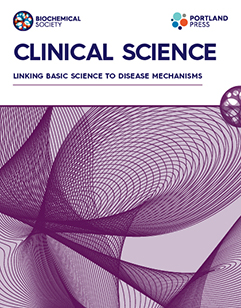脾脏参与皮质激素诱发癫痫状态后的神经炎症:对癫痫发生和癫痫的影响。
IF 6.7
2区 医学
Q1 MEDICINE, RESEARCH & EXPERIMENTAL
引用次数: 0
摘要
癫痫是一种以反复发作为特征的慢性神经系统疾病,影响着全球数百万人。尽管进行了广泛的研究,但导致癫痫发生(正常大脑发生癫痫的过程)的潜在机制仍然难以捉摸。我们在此探讨了皮质类固醇诱发的癫痫状态(SE)所引发的免疫系统和脾脏反应,重点是它们在 SE 之后的癫痫发生过程中的作用。对脾脏组织病理学的初步检查显示,SE动物的白髓出现了短暂的紊乱。这种紊乱归因于免疫激活,在 SE 后 1 天(1DPSE)达到高峰,但在 3DPSE 时又恢复到控制水平。外周血淋巴细胞群的变化表明,SE 后淋巴细胞减少,CD3+ T 淋巴细胞也随之减少。进一步研究发现,在 3DPSE 时,梨状皮层和脉络丛中的 T 淋巴细胞数量增加,这表明淋巴细胞向中枢神经系统进行了特异性迁移。值得注意的是,脾切除减轻了SE后大脑反应性星形胶质细胞增多、神经炎症和巨噬细胞浸润,尤其是在海马和梨状皮层。此外,切除脾脏的动物颈深淋巴结中的淋巴滤泡体积缩小。最重要的是,脾切除与神经元存活率的提高相关,这体现在SE后海马皮质和海马CA2-3的神经元丢失和退化减少。总之,这些发现强调了脾脏在协调皮质激素诱导 SE 后的免疫反应和神经炎症中的关键作用,表明外周免疫系统是减轻癫痫神经元变性的潜在治疗靶点。本文章由计算机程序翻译,如有差异,请以英文原文为准。
Participation of the spleen in the neuroinflammation after pilocarpine-induced status epilepticus: Implications for epileptogenesis and epilepsy.
Epilepsy, a chronic neurological disorder characterized by recurrent seizures, affects millions of individuals worldwide. Despite extensive research, the underlying mechanisms leading to epileptogenesis, the process by which a normal brain develops epilepsy, remain elusive. We here explored the immune system and spleen responses triggered by pilocarpine-induced status epilepticus (SE) focusing on their role in the epileptogenesis that follows SE . Initial examination of spleen histopathology revealed transient disorganization of white pulp, in animals subjected to SE. This disorganization, attributed to immune activation, peaked at 1-day post-SE (1DPSE) but returned to control levels at 3DPSE. Alterations in peripheral blood lymphocyte populations, demonstrated a decrease following SE, accompanied by a reduction in CD3+ T-lymphocytes. Further investigations uncovered an increased abundance of T-lymphocytes in the pyriform cortex and choroid plexus at 3DPSE, suggesting a specific mobilization towards the Central Nervous System. Notably, splenectomy mitigated brain reactive astrogliosis, neuroinflammation, and macrophage infiltration post-SE, particularly in the hippocampus and piriform cortex. Additionally, splenectomized animals exhibited reduced lymphatic follicle size in the deep cervical lymph nodes. Most significantly, splenectomy correlated with improved neuronal survival, substantiated by decreased neuronal loss and reduced degenerating neurons in the piriform cortex and hippocampal CA2-3 post-SE. Overall, these findings underscore the pivotal role of the spleen in orchestrating immune responses and neuroinflammation following pilocarpine-induced SE, implicating the peripheral immune system as a potential therapeutic target for mitigating neuronal degeneration in epilepsy.
求助全文
通过发布文献求助,成功后即可免费获取论文全文。
去求助
来源期刊

Clinical science
医学-医学:研究与实验
CiteScore
11.40
自引率
0.00%
发文量
189
审稿时长
4-8 weeks
期刊介绍:
Translating molecular bioscience and experimental research into medical insights, Clinical Science offers multi-disciplinary coverage and clinical perspectives to advance human health.
Its international Editorial Board is charged with selecting peer-reviewed original papers of the highest scientific merit covering the broad spectrum of biomedical specialities including, although not exclusively:
Cardiovascular system
Cerebrovascular system
Gastrointestinal tract and liver
Genomic medicine
Infection and immunity
Inflammation
Oncology
Metabolism
Endocrinology and nutrition
Nephrology
Circulation
Respiratory system
Vascular biology
Molecular pathology.
 求助内容:
求助内容: 应助结果提醒方式:
应助结果提醒方式:


